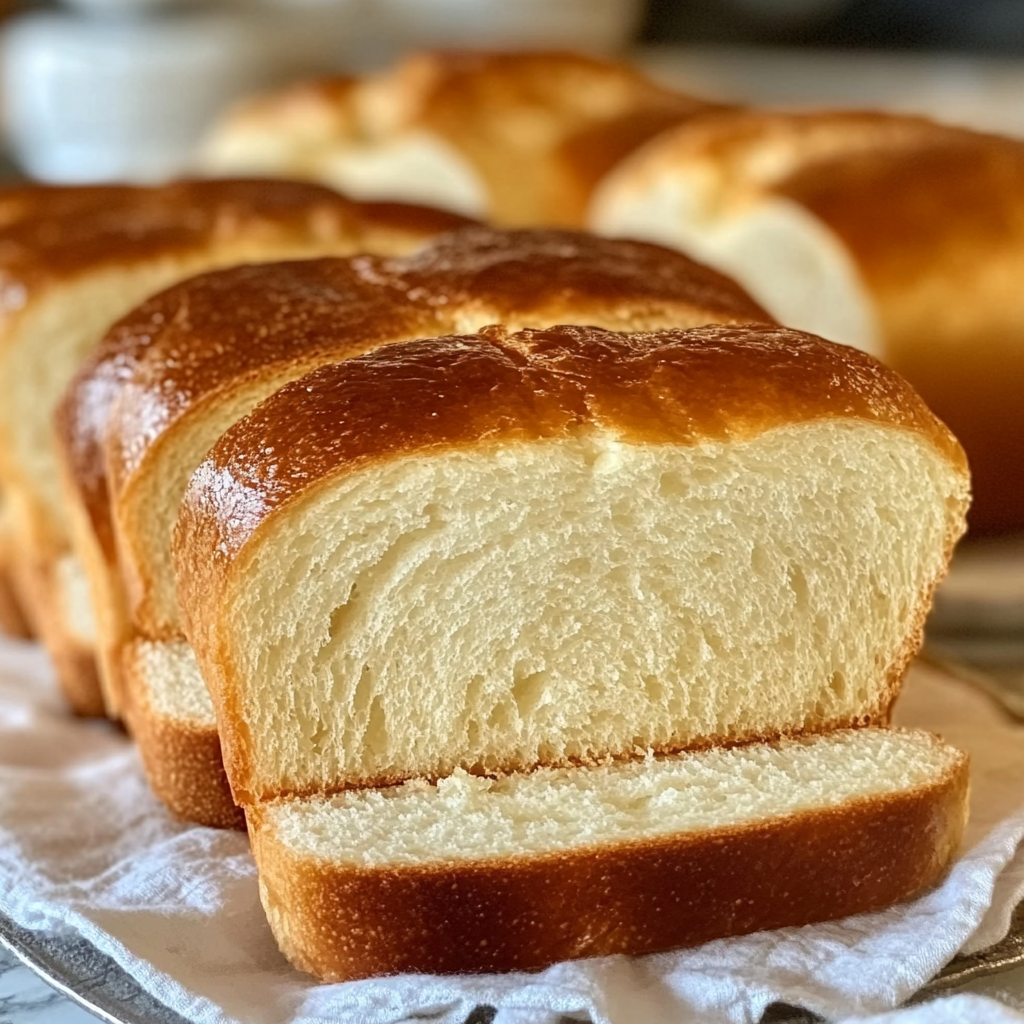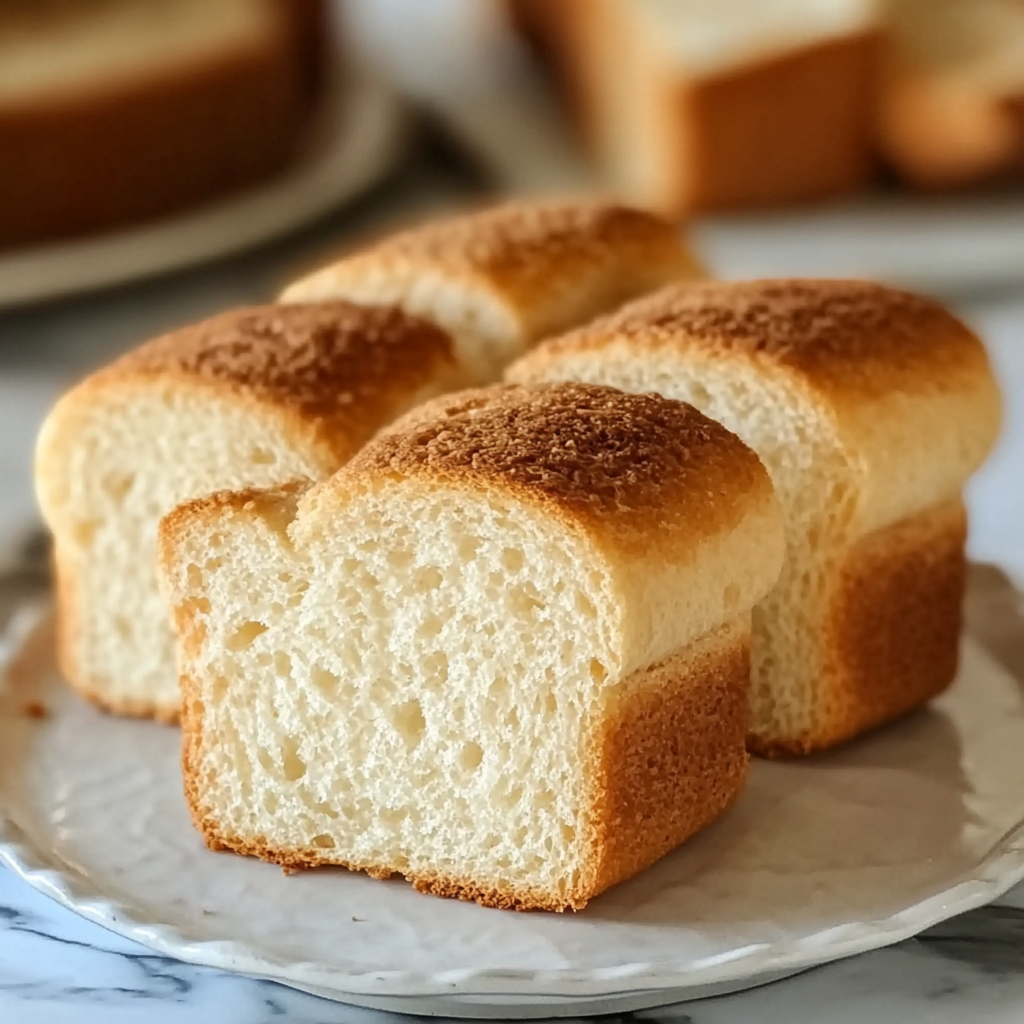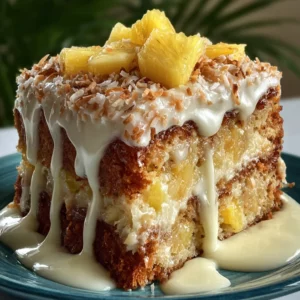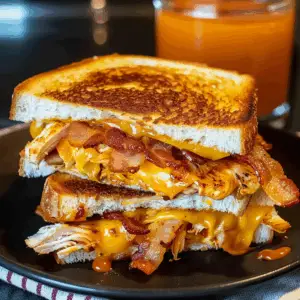Craving homemade bread but short on time — and out of yeast? You’re not alone. Many home bakers face the challenge of wanting fresh, warm bread without the long rise times or specialty ingredients. Luckily, there’s a quick solution: 20-minute homemade bread without yeast. It’s not only fast and easy but also ideal for beginners, busy families, or those working with limited pantry staples.
This recipe doesn’t rely on yeast, which means you don’t have to wait for dough to rise. Instead, it uses baking powder, a common leavening agent that allows the bread to rise while baking. Quick breads, like this one, are known for their rapid preparation and simplicity, which makes them perfect for last-minute meals or a cozy baking project with kids.
Unlike traditional bread, which requires kneading and patience, this version comes together with minimal effort. You’ll use everyday ingredients like all-purpose flour, milk, and oil to whip up a fluffy loaf that pairs well with soups, salads, or a simple smear of butter. For even more kitchen ideas, check out our easy homemade bread recipes and learn how to turn basic ingredients into something truly satisfying.
Whether you’re a seasoned baker looking for a shortcut or a total beginner, this guide shows you how to make no yeast bread that’s ready in just 20 minutes — with no special tools or advanced techniques required.

Why Make Bread Without Yeast?
There are many reasons people seek out bread recipes without yeast. Whether you’re out of yeast, have dietary restrictions, or just want to bake something fast, making no yeast bread offers both convenience and versatility. Unlike traditional yeast-based loaves that can take hours to rise and bake, quick breads like this one are ready in under 30 minutes from start to finish.
The key difference lies in the leavening process. Traditional breads use yeast, which requires time to ferment and create air bubbles that give bread its rise and texture. In contrast, this recipe uses baking powder, a chemical leavening agent that works instantly when combined with liquid and heat. You can learn more about how this works on Wikipedia’s page on leavening agents.
Another advantage of no-yeast bread is its reliability. Yeast can be tricky—sometimes it doesn’t activate, or the dough overproofs. With no yeast bread, there’s no guesswork. The simple chemistry of baking powder and milk ensures a consistent rise every time. Plus, ingredients like all-purpose flour and vegetable oil are pantry staples that don’t require special shopping trips.
No-yeast recipes are also a great option for people with yeast sensitivities or those who want to avoid fermented foods. And when you need something fast—like a side for soup, an emergency sandwich base, or just warm bread for butter—this kind of recipe becomes a lifesaver. For ideas on how to use your finished loaf, browse through our quick bread recipe ideas on Pinterest or check out our article on baking without yeast.
In short, 20-minute homemade bread without yeast is more than a shortcut—it’s a reliable, flexible, and satisfying way to bake.
Ingredients You’ll Need
Making 20-minute homemade bread without yeast starts with a few basic ingredients — likely already in your pantry. Each one plays a crucial role in the final result, giving the bread its structure, flavor, and texture. Here’s what you’ll need and why it matters.
-
2 cups of all-purpose flour
This is the base of your dough. It provides the structure and body of the bread. You can substitute it with whole wheat or a gluten-free flour blend for a different flavor and nutritional profile. Learn more about the types of flour on Wikipedia’s flour guide. -
1 tablespoon of baking powder
Instead of yeast, this acts as your rising agent. It reacts quickly with the liquids and heat to make the dough rise. Understanding how this ingredient works is essential—check out how baking powder functions in baked goods. -
1 teaspoon of salt
It enhances flavor and strengthens the dough. Skipping this will result in a bland loaf, so it’s not optional. -
1 tablespoon of sugar (optional)
A small amount adds a hint of sweetness and helps with browning. You can leave it out or adjust depending on your taste preference. -
1 cup of milk (whole or 2%)
This adds moisture and richness. You can swap it with plant-based milk like almond or oat if you’re avoiding dairy. For more on substitutions, see this guide to milk substitutes in baking. -
¼ cup of vegetable oil or melted butter
This ingredient adds moisture and tenderness. Butter adds a slightly richer flavor, while oil keeps the bread soft. If you’re unsure which to use, learn more about butter vs oil in baking.
For even more creative combinations and toppings, explore our post on delicious bread variations or get inspired by homemade baking tips to elevate your loaf.
These simple ingredients are the key to quick, no yeast bread that tastes homemade — because it is.
Equipment Checklist
To make 20-minute homemade bread without yeast, you don’t need any fancy kitchen gear — just a few basic tools that most home bakers already have. Having everything prepped and ready ensures a smoother process from mixing to baking.
Here’s what you’ll need:
-
Mixing bowl
A medium or large bowl is ideal for combining your dry and wet ingredients. -
Whisk or mixing spoon
Use a whisk to evenly blend dry ingredients like flour and baking powder, then switch to a sturdy spoon or spatula to incorporate the wet ingredients without overmixing. -
Measuring cups and spoons
Precise measurement is key in baking. Too much flour or too little liquid can drastically change the bread’s texture. -
8×8-inch baking dish or a baking sheet lined with parchment paper
An 8×8 dish gives you a soft, square loaf with a slightly fluffy center, while forming the dough into a rustic shape on a baking sheet will yield a more crusty exterior. For more about how different pans affect baking, check our baking mistakes to avoid board. -
Parchment paper (optional)
Makes cleanup easier and prevents sticking, especially if you’re shaping your loaf freeform on a baking sheet. -
Oven
Preheat to 425°F (220°C) before you begin. An oven thermometer can help ensure accuracy if your oven tends to run hot or cold.
Having these items ready will help you move quickly and efficiently, which is essential for a recipe that comes together in under 20 minutes. For a full list of kitchen essentials for baking, you can explore our guide on homemade baking tips.
Step-by-Step Instructions (With Tips)
Making this 20-minute homemade bread without yeast is fast and beginner-friendly. Follow these steps carefully for a soft, fluffy, golden loaf every time.
1. Preheat your oven
-
Set your oven to 425°F (220°C).
-
Let it fully preheat while you prepare the dough to ensure even baking. If you’re using a baking dish, grease it lightly or line it with parchment paper.
2. Mix the dry ingredients
In a large mixing bowl, combine:
-
2 cups all-purpose flour
-
1 tbsp baking powder
-
1 tsp salt
-
1 tbsp sugar (optional)
Use a whisk to thoroughly blend. This ensures even distribution of the leavening agent and avoids clumps.
3. Add the wet ingredients
Pour in:
-
1 cup milk (whole or 2%)
-
¼ cup vegetable oil or melted butter
Using a sturdy spoon or spatula, stir until just combined. The batter should be thick and slightly sticky.
Tip: Don’t overmix. Overmixing develops gluten, which can lead to a dense, tough texture. Stir only until there are no visible dry streaks.
Step-by-Step Instructions (With Tips)
4. Shape and transfer the dough
You have two options:
-
Option 1: Baking dish method
Transfer the dough into a lightly greased 8×8-inch baking dish. Use a spatula to spread it evenly. -
Option 2: Freeform rustic loaf
Line a baking sheet with parchment paper. Form the dough into a rough round loaf and place it in the center. This gives a crustier texture.
For ideas on variations, see our easy homemade bread variations.
5. Bake the bread
-
Place in the preheated oven and bake for 18–20 minutes.
-
Check doneness by inserting a toothpick in the center — it should come out clean.
-
The top should be lightly golden with a slightly crisp edge.
6. Let it cool briefly
Remove the bread from the oven and let it cool in the pan for 5 minutes. Then transfer it to a wire rack or cutting board.
Tip: Allowing the bread to rest before slicing helps the crumb set and prevents it from tearing.
For more baking science and tricks, read about common baking mistakes to avoid and how butter vs oil affects baking.
Pro Tips for Perfect No-Yeast Bread Every Time
Even a quick bread benefits from small tweaks that make a big difference. Use these pro tips to perfect your loaf every time:
-
Avoid overmixing
Stir until the ingredients are just combined. Overmixing activates too much gluten, resulting in a dense loaf. -
Use room-temperature milk
Cold milk can affect the activation of the baking powder. Let it sit out for 10–15 minutes before using. -
Choose your fat wisely
Oil makes the bread extra moist, while melted butter gives a richer flavor. Learn more about how fats influence baking. -
Add flavor boosters
Mix in dried herbs (like rosemary or oregano), shredded cheese, or minced garlic to level up the taste. For inspiration, browse our quick bread recipe ideas. -
Watch your oven
Not all ovens bake evenly. Use an oven thermometer if your baked goods often come out over or underdone. -
Grease or line your pan well
Prevent sticking by thoroughly greasing your dish or using parchment paper. This also makes cleanup easier.
For more essential techniques, check our post on homemade baking tips.
Creative Variations You Can Try
This no-yeast bread recipe is versatile. Once you’ve mastered the basic version, try these tasty twists:
-
Cheesy Garlic Bread
Add ½ cup shredded cheddar and 1 tsp garlic powder to the batter. -
Sweet Cinnamon Loaf
Mix in 1 tsp cinnamon and 2 tbsp sugar. Swirl in a bit of honey or maple syrup. -
Whole Wheat Option
Use half whole wheat flour and half all-purpose for a nuttier flavor and more fiber. -
Dairy-Free Version
Use almond or oat milk, and replace butter with coconut oil or vegetable oil. See milk substitute options for more ideas. -
Savory Mediterranean
Fold in chopped sun-dried tomatoes, olives, and crumbled feta.
For even more flavor ideas, browse our collection of easy homemade bread variations.
Serving Suggestions
Your 20-minute bread is warm, fluffy, and ready to be served. Here are simple and delicious ways to enjoy it:
-
Serve warm with butter or jam
The simplest way to enjoy it — soft, slightly sweet, and comforting. -
Pair with soups or stews
This bread is the perfect dipping partner for tomato soup, chicken stew, or chili. -
Use as sandwich bread
Slice thick and stack with your favorite fillings. It’s great for grilled cheese or breakfast sandwiches.
For more ideas, check our list of quick breads that pair well with meals.
Storage and Reheating Tips
Want to enjoy your bread later? Follow these storage and reheating methods to keep it tasting fresh:
-
Room temperature
Store in an airtight container or wrap in foil for up to 3 days. -
To refrigerate
While not necessary, refrigeration can extend freshness. Wrap tightly to avoid drying out. -
Freezing
Slice before freezing. Wrap each piece in plastic, then store in a freezer bag for up to 2 months. -
Reheating
Warm in a toaster oven or regular oven at 300°F for 5–7 minutes to restore texture. Avoid microwaving as it can make the bread rubbery.
Common Mistakes to Avoid
Even simple recipes can go wrong. Avoid these common pitfalls for consistent success:
-
Overbaking
Exceeding the baking time dries out the bread. Check with a toothpick at the 18-minute mark. -
Overmixing
Creates a dense, chewy texture. Mix only until just combined. -
Old baking powder
Check the expiration date. Expired leavening agents won’t rise properly. See how baking powder works. -
Incorrect measurements
Use accurate measuring tools, especially for flour and liquids. Scooping flour directly from the bag can lead to using too much.

FAQs
Q1: Can I make no yeast bread without baking powder?
Yes, but you’ll need an alternative leavening method like baking soda plus an acid (e.g., lemon juice or vinegar). It won’t be quite the same, but it can work in a pinch. See our post on baking powder substitutes.
Q2: Can I use water instead of milk?
Yes, you can substitute water, but the bread may be slightly drier and less flavorful. For best results, use milk or a milk substitute.
Q3: How do I make bread rise without yeast?
Use chemical leaveners like baking powder or baking soda with acidic ingredients. Learn more on Wikipedia’s leavening agent page.
Q4: Is no yeast bread healthy?
It can be. Use whole grain flour, skip the sugar, and opt for plant-based milk and oil to make a healthier loaf.
Q5: Can I cook this bread in a skillet or air fryer?
Yes! Cook in a nonstick skillet over low heat (covered) for about 15 minutes per side or try the air fryer at 350°F for 10–12 minutes. Adjust time based on thickness.
Printow to Make 20 Minute Homemade Bread Without Yeast
This 20-minute homemade bread without yeast is quick, simple, and perfect for beginners. Made with everyday pantry staples like flour, milk, and baking powder, this no-rise bread comes out warm, golden, and ready to eat in less than half an hour. Whether you bake it in a dish or shape it into a rustic loaf, it’s the ideal solution when you need fresh bread fast — without the wait or the yeast.
- Author: Clara
Ingredients
- 2 cups all-purpose flour
- 1 tbsp baking powder
- 1 tsp salt
- 1 tbsp sugar (optional, for slight sweetness)
- 1 cup milk (whole or 2%)
- ¼ cup vegetable oil or melted butter
Instructions
Preheat your oven to 425°F (220°C).
In a large bowl, whisk together the flour, baking powder, salt, and sugar.
Add the milk and vegetable oil to the dry ingredients. Stir until just combined; do not overmix.
Transfer the dough to a greased 8×8-inch baking dish or form into a rough loaf on a baking sheet lined with parchment paper.
Bake for 18–20 minutes, or until the top is lightly golden and a toothpick inserted into the center comes out clean.
Let it cool for a few minutes before slicing and serving.
Notes
-
Don’t overmix — stir until ingredients are just combined to keep the bread soft.
-
For a crispier crust, bake as a freeform loaf on a parchment-lined sheet.
-
Room-temperature milk helps the baking powder activate fully.
-
Add herbs, cheese, or spices to customize the flavor.
-
Bread is best served warm but can be toasted the next day for added crunch.





